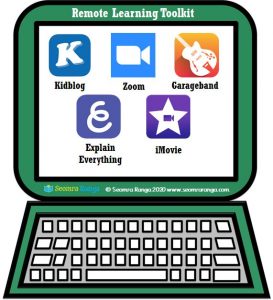 In the aftermath of school closures due to the outbreak of the Corona Virus/Covid-19, there was a rush by teachers and schools to see how they could provide a suitable distance/remote learning experience for their pupils. Teachers were looking to see what technology/ies they could use to have their pupils work from home.
In the aftermath of school closures due to the outbreak of the Corona Virus/Covid-19, there was a rush by teachers and schools to see how they could provide a suitable distance/remote learning experience for their pupils. Teachers were looking to see what technology/ies they could use to have their pupils work from home.
In the spirit of “teachers helping teachers”, there was an online avalanche of suggestions of technologies, online platforms, websites and apps that would assist teachers to provide an educational experience for pupils while learning at home.
Although all of these suggestions were well-intentioned, I felt that, for the uninitiated who were not using much technology in their teaching/learning up to this point, the suggestions could be overwhelming. I felt that it was going to be like looking for the proverbial needle in a haystack.
Many teachers/schools moved to online platforms like Google Classroom, Edmodo, Seesaw in order to make contact with pupils and attempt to provide some continuity in their learning experiences during this time. There was also a feeling that, in such uncertain times, that we could also overwhelm pupils and parents. Teachers and schools had to make that judgement call for themselves.
In this context, these are the tools that I am using to assist my own 6th class pupils during this period of remote/distant learning.
Kidblog
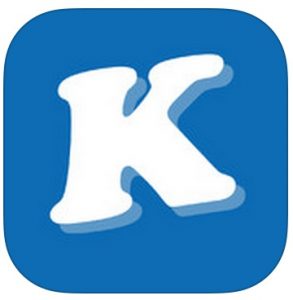 I have been using Kidblog for some years as a platform/space for my pupils and I to work in an online environment. Because my present 6th class have been comfortably using this platform since September, it was not a difficult stretch to move all of our work into that space. Kidblog gives us a space to engage with each other, to set work, to present work and to comment and support each other.
I have been using Kidblog for some years as a platform/space for my pupils and I to work in an online environment. Because my present 6th class have been comfortably using this platform since September, it was not a difficult stretch to move all of our work into that space. Kidblog gives us a space to engage with each other, to set work, to present work and to comment and support each other.
Kidblog is a pared back version of a WordPress blog – it has very basic functions which the pupils can easily manage. It costs $54 per year and I set up all of my pupils on it at the beginning of the year. Within the blog, each pupil has their own blog. They can write their own blog posts, see each other’s blog posts and comment (positively!) on each other’s work.
Everything including pupils’ blog posts and comments are teacher-moderated – that gives us a safety net to guard against any unpleasantness occurring, which, thankfully, has never happened. I have set the blog to private so that it is not open to the public. At the end of the year, you can archive the present class and set up the next class on it.
Pupils do lots of different types of work on the blog: they present their project work, including text, images and video; they listen to podcasts I have made of their léitheoireacht as Gaeilge; they watch videos I have posted for them and give their reactions to them; they visit links to websites i provide them with; they complete art work which they photograph and upload; they make comments upon issues that arise in our class novel or our SESE work.
By the end of the year, Kidblog ends up like a version of our Digital Portfolio, a repository of all of the work that we have completed throughout the year.
At the moment, I am posting all of the work that we would have normally done in class onto the blog. My attitude is that, in the present climate, if the work is completed that is fine – alternatively, if it is not completed, that is also fine.
Garageband
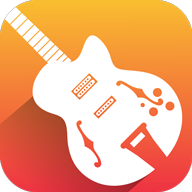 Garageband is the iOS app that comes with most Apple devices. It is used primarily for recording sound and music – I use this to easily create podcasts. I use the Audio Recorder section to record podcasts for almost anything – I record their Irish reading; I record spelling/litriú/dictation tests; I record answers to their maths work so that they can self correct at home; I record answers to their Gaeilge work so that they can self correct at home also; I have recorded extracts from our novel for them to listen to and react to.
Garageband is the iOS app that comes with most Apple devices. It is used primarily for recording sound and music – I use this to easily create podcasts. I use the Audio Recorder section to record podcasts for almost anything – I record their Irish reading; I record spelling/litriú/dictation tests; I record answers to their maths work so that they can self correct at home; I record answers to their Gaeilge work so that they can self correct at home also; I have recorded extracts from our novel for them to listen to and react to.
There are so many ways in which this is a useful tool to me. The interface is fairly easy to use. I purchased a clip-on mic to use for recording which works better than the in-built mic. When I have finished and saved the podcast, I upload and save it to my Dropbox account and from there I upload it onto the blog to embed it into a blog post, which is a fairly easy process.
Explain Everything
 I used Explain Everything some years ago and then stopped using it but have now come back to it again, now that pupils are learning at home. It is basically a Whiteboard app which you can write and draw upon. At the moment, I find it most useful for doing Maths work. I record our Mental Maths using this app each day.
I used Explain Everything some years ago and then stopped using it but have now come back to it again, now that pupils are learning at home. It is basically a Whiteboard app which you can write and draw upon. At the moment, I find it most useful for doing Maths work. I record our Mental Maths using this app each day.
I can draw key points on the board as we are going along and I can then give out the answers to all of the questions so that pupils can self correct their work. The app will record your voice, along with anything you draw on the Whiteboard and save both as a video. Like Garageband, I save the video to my Dropbox account and then upload it as a video to Kidblog and embed it in a Blog Post for the pupils to view.
Zoom
 Zoom is a new technology for me to try at the present time. I was looking for something simple to engage with pupils live while we were not in school. I was reading online about lots of schools using this conference meeting type technology so I decided to give it a go. Our first attempt failed as the pupils could hear and see each other and me but they could not hear me. We got that sorted and now we meet twice a day, every day.
Zoom is a new technology for me to try at the present time. I was looking for something simple to engage with pupils live while we were not in school. I was reading online about lots of schools using this conference meeting type technology so I decided to give it a go. Our first attempt failed as the pupils could hear and see each other and me but they could not hear me. We got that sorted and now we meet twice a day, every day.
We meet in the morning and usually do Mental Maths and Maths work. Then we meet again in the afternoon and work on our class novel and/or some other aspect of English work, perhaps grammar. It is lovely for the pupils and I to be able to make daily contact with one another and to touch base. It also gives pupils a structure to their day, knowing that we meet every morning and afternoon.
The basic element of Zoom is free to use and you can have a 40-minute meeting at a time. I set up the meeting and post the link to it on Kidblog where pupils can easily access the link. During the present crisis, Zoom are offering unlimited full free access to teachers/schools – but you must have a school email address and you must apply for this. At the moment, I’m happy enough with my two 40-minute classes.
One thing I like with Zoom is that I can bring up a Whiteboard that all pupils can see. If I am explaining something in Maths, I can draw on the Whiteboard for pupils to see – the only drawback is that I am drawing with the mouse which isn’t always pretty. I can also grant a pupil access to the Whiteboard so that they can also draw on it.
Another aspect of Zoom that I like is that I can have a Powerpoint or a PDF file open on my laptop and show this to pupils within the meeting. This means that you can have a lesson prepared which the pupils can all see straight away. We used this to do an art appreciation lesson and to do a couple of English grammar lessons.
The things you have to get used to with Zoom are: trying to get the pupils to log on in time in order to make the most of the 40 free minutes that you have; pupils have to have a decent enough mic (either built-in or clip-on) so that they can be heard; they need to be in a fairly quiet room at home to minimise the background noise. Apart from that, it is working very well. I regularly get 45%-60% of pupils join the session each day, which I am happy with.
iMovie
![]() I’ve just used iMovie once during this period to prepare a lesson. I recorded myself reading an Irish supplementary reader, with just the book in front of the camera, so that pupils could follow the text as I was reading it. It was a very simple process to record this.
I’ve just used iMovie once during this period to prepare a lesson. I recorded myself reading an Irish supplementary reader, with just the book in front of the camera, so that pupils could follow the text as I was reading it. It was a very simple process to record this.
Again, I saved the video to my Dropbox account and uploaded it to Kidblog to be embedded into a Blog Post. I then posted comprehension questions and a Fíor nó Bréagach exercise based on the book for the pupils to complete.
I hope that this post gives just a little flavour of the tech tools that I am using to help my pupils to learn at home in the present circumstances. I am just using these five tools at the moment and they are working very well for us. For others, this may be too much. My advice would be not to try too many new things at this time. It is a time of stress for all of us – educators, parents and pupils alike. So, perhaps, select one new thing to try out and let everyone get used to that for a while before introducing another new tool. Above all, be safe.
Background image at top of post from Adventures of a Techie Bookworm on Teachers Pay Teachers



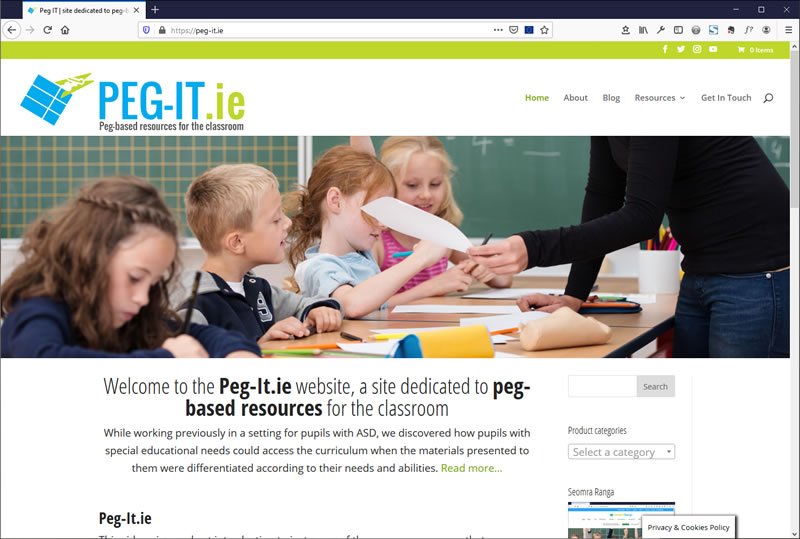
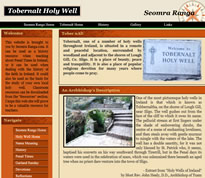

Thanks Damien,
This gives a great picture of what can be achieved, albeit with something of a head start with an existing online forum in use before the closure.
The point you make about not expecting 100% attendance or completion of work due to varying home situations is very important.
I have a question:
With Explain Everything, what level of account do you have, and is it worth paying for over some of the free options e.g. Showbie etc?
Thanks again
Paul
Hi Paul, I just have the free version of Explain Everything, as far as I know.
Great read! I’ve been a fan of kidblog for years as it offers so much to a classroom and is so safe. Hadn’t come across explain everything before so thank you
Máire